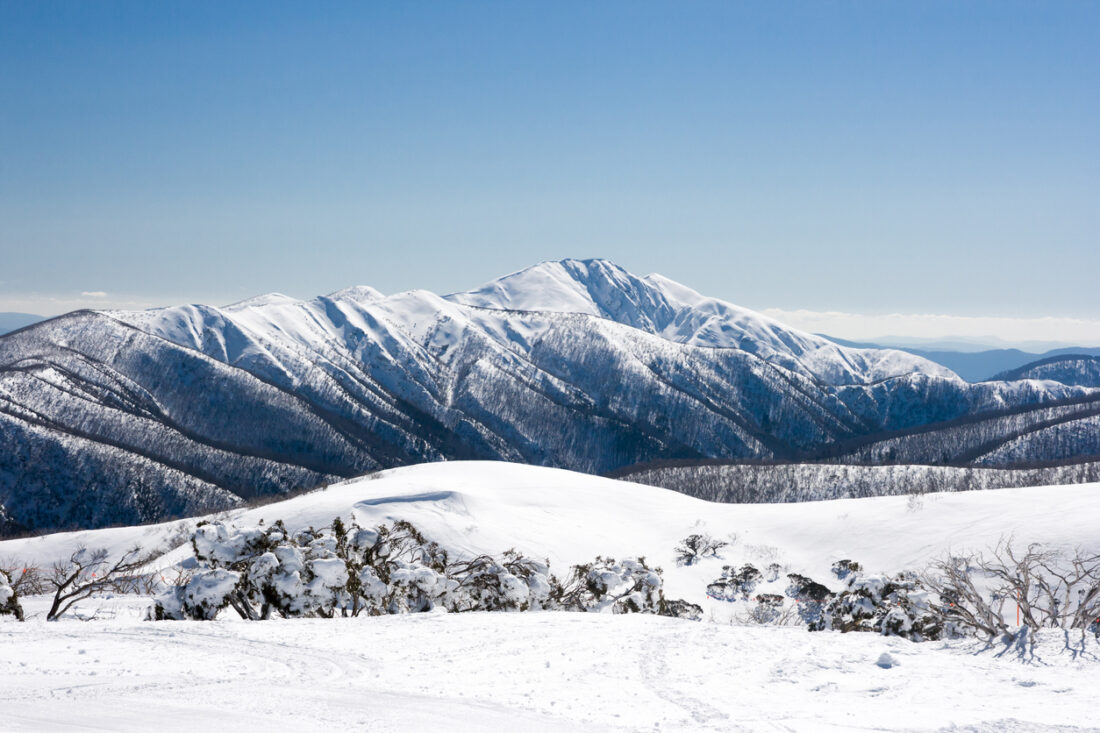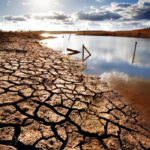
Up until as recently as the late 1990s, Australian ski resorts were too embarrassed to boast about their snow-making capabilities.
You either had the real McCoy, or ran the risk of not having a viable business model at all.
Today, however, state-of-the-art snow guns working overtime to accommodate the June to October alpine season are not just a point of differentiation and comparative advantage, but essential to survival.
According to the latest CSIRO numbers, the $1.8 billion industry is on increasingly shaky ground, due to greenhouse gas emissions melting the pure white powder on higher slopes at an alarming rate.
The CSIRO’s 2015 climate change modelling predicts that under a low-risk scenario, the average snow season across Victoria and some of New South Wales will become 20 to 55 days shorter by 2050.
When worst-case projections are inputted, Australia’s traditional 112-day alpine season, is slashed anywhere from 30 to 80 days during the same period.
“If we continue to increase greenhouse gas house emissions at the current rate there will be a relatively rapid decline in snow cover and snow duration,” confirms Kevin Hennessy, the CSIRO Climate Science Centre research director.
“We are looking at a committed warming of at least one or two degrees over the next decade so an amount of change is unavoidable.
“But beyond about the 2030s, it does depend on how our greenhouse gas house emissions are managed,” he also tells ABC News.
The CSIRO first flagged its concerns to an industry – which employs an estimated 18,000 people each year – with its sobering 2003 report The Impact of Climate Change on Snow Conditions in Mainland Australia.
In it, the researchers predicted the amount of snow machines would need to increase by 100 per cent by 2020, in order to keep the industry profitable.
But by as early as 2013, Colin Hackworth, CEO of Australia Ski Areas Association, an industry body representing ski area owners and operators, told the ABC’s Bush Telegraph that the industry’s reliance on snow machines had already reached those projections.
“In the last 10 years, snow making capability has doubled,” he said at the time.
“It’s something which guarantees people a holiday. Eighty per cent of skiers tend to stick to the beginner and intermediate slopes and it’s these slopes which will continue to be snow made.”
Kevin Hennessy says higher Australian ski fields such as the Snowy Mountain’s Perisher in NSW, the largest in the southern hemisphere, would stay open longer.
But he also warns that even they are not immune to the impacts of higher greenhouse gas emissions.
“In the Kosciuszko [National Park] region, which has fairly high elevation, we expect there to be good years and bad years right through this century and not until the end of this century might we see really, really low snow levels.
“To make snow you require wet bulb temperature below minus 1 or minus 2 degrees Celsius.
“We anticipate by 2030, the opportunities for snow making might be halved with the exception of some of the high resorts where opportunities might be halved by 2040s.
“The ski industries both in Victoria and New South Wales are factoring in climate change into their projections. The question is how long is that financially viable?”
In the U.S, the effect of global warming on the ski industry has already been significant.
Between 1999 and 2010, low snowfall years cost the industry US$1 billion and up to 27,000 jobs, reports The New York Times. Oregon took the brunt on the West Coast, with 31 percent fewer skier visits during low snow years. Next was Washington at 28 percent, Utah at 14 percent and Colorado at 7.7 percent.
“It’s a bigger issue than, ‘Oh, we can’t ski,’” said Diana Madson, executive director of the non-profit Mountain Pact, a U.S. advocacy group focused on stemming the impacts of climate change on ski towns.
“It’s loss of jobs and major environmental degradation,” she told Outside.
A 2012 study done by the National Centre for Atmospheric Research in the U.S. concluded that the US$12.2 billion winter tourism industry can’t survive on snow-gun slopes, and ski resorts account for 36 percent of winter tourism-related employment.
“In order to protect winter—and the hundreds of thousands whose livelihoods depend upon a snow-filled season—we must act now to support policies that protect our climate, and in turn, our slopes,” the report said.
Closer to home, the Australian industry isn’t just sitting around and hoping the scientists have it all horribly wrong.
The Victorian Alpine Resorts 2020 Strategy, along with the Australian Keep Winter Cool Initiative area just two bodies to recognise climate change as a major threat to the future of skiing in Australia, says Traveller.
The ski fields are also doing all they can to offset carbon emissions and future proof themselves as best they can.
Mt Buller has a $3.43 million development to utilise treated wastewater for snowmaking, with up to two million litres of wastewater recycled each day.
Hotham is also run on recycled water and water from Rocky Valley Lake used for snowmaking at Falls Creek is returned to the lake due to a closed loop snowmaking operation. Falls Creek also uses hydroelectricity to power chairlifts and snowmaking.
Traveller reports that Perisher’s multi-million dollar investment over the last decade has ensured that snowmaking is now nine times more energy efficient.
Across the valley in Thredbo, the resort committed to diesel and unleaded petrol for vehicle use and planted over 2000 trees and shrubs around the village, and also offset the emissions generated by grooming and vehicle fleets.
“There’s always room for optimism,” CSIRO’s climate projection scientist Michael Grose tells ABC News.
“Things like the Paris Agreement have put it [climate change] on the agenda and set an ambitious target.
“If we can meet those targets that will certainly put us on a better trajectory than if we had a high-emission scenario going through to 2100.”
Rob Cawthorne, manager director of the Sydney-based Carbon Reduction Institute (CRI), and a dedicated snowsports lover, is confident that the necessary emission reductions can be met.
“As an avid skier, the loss of the ski season in Australia hits close to home,” says Cawthorne.
“But as a carbon management entrepreneur I know the solutions are available for government, businesses and individuals to address climate change and in doing so help save the ski season in Australia.”
Further reading
For more information, visit our blog post about solar windows and solar panels.


